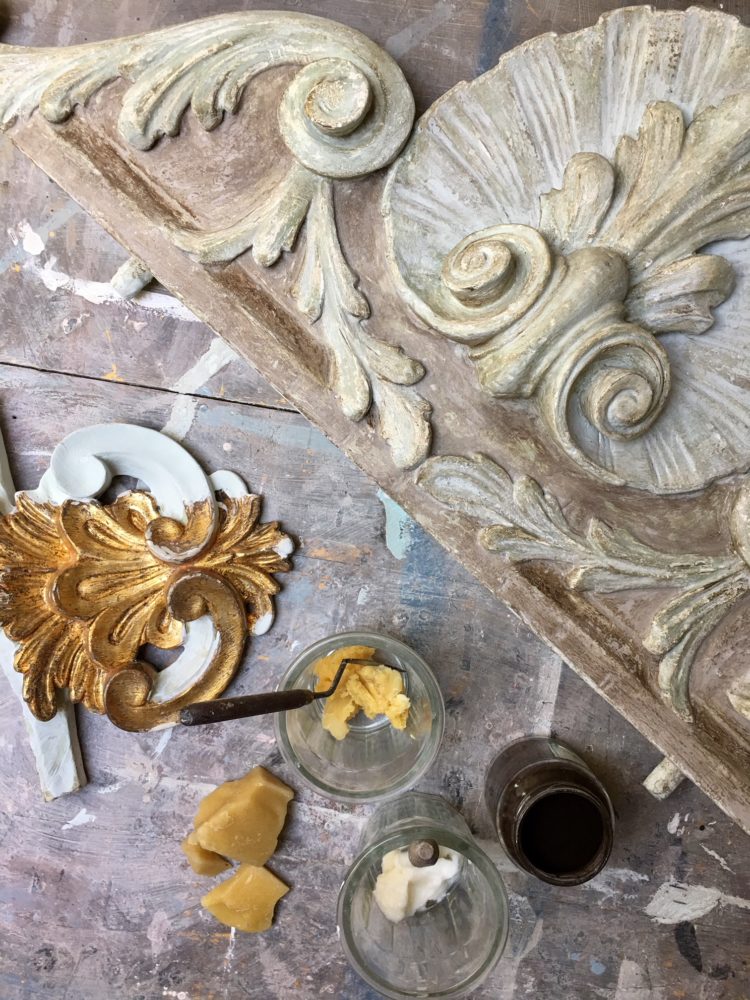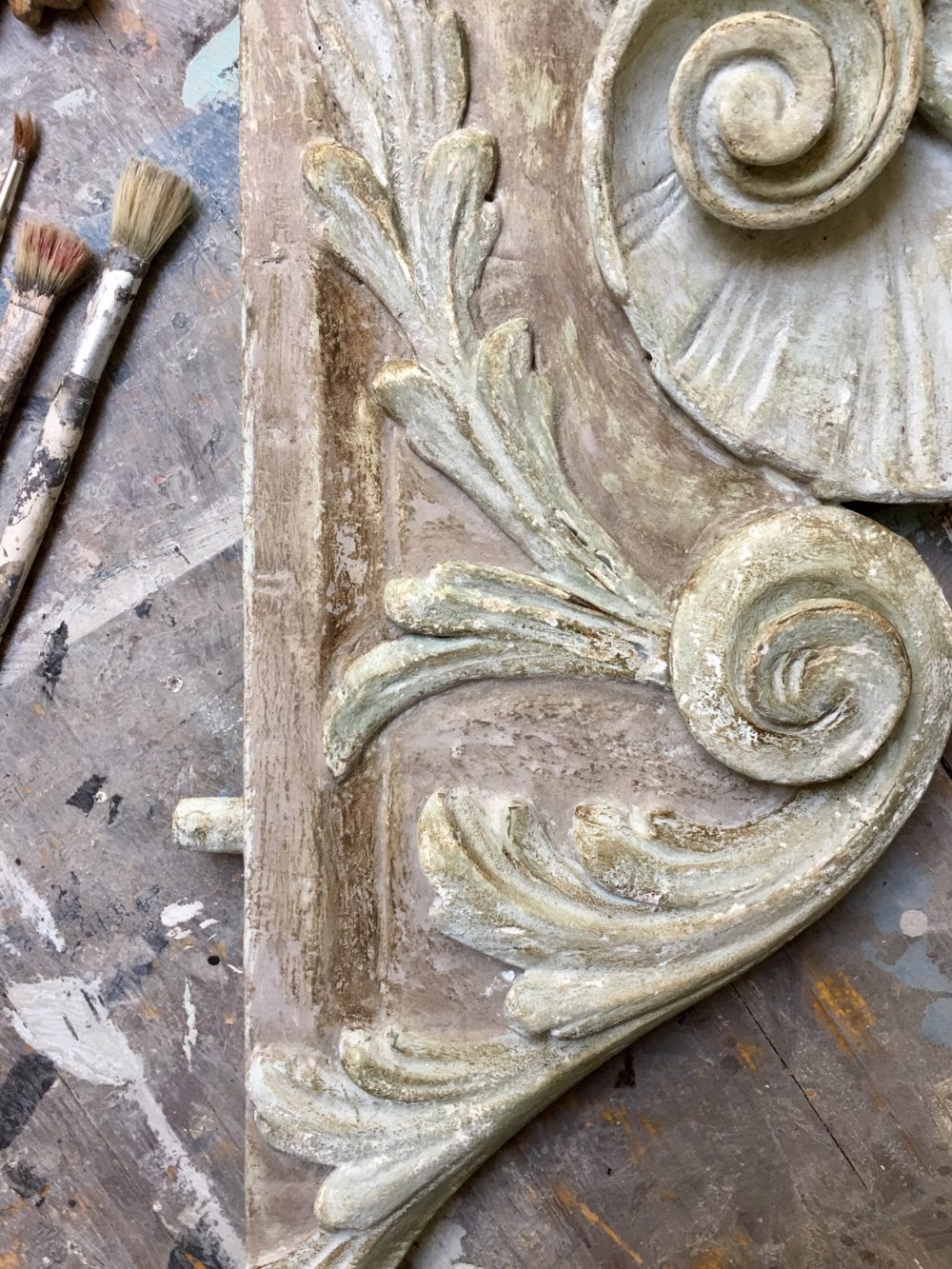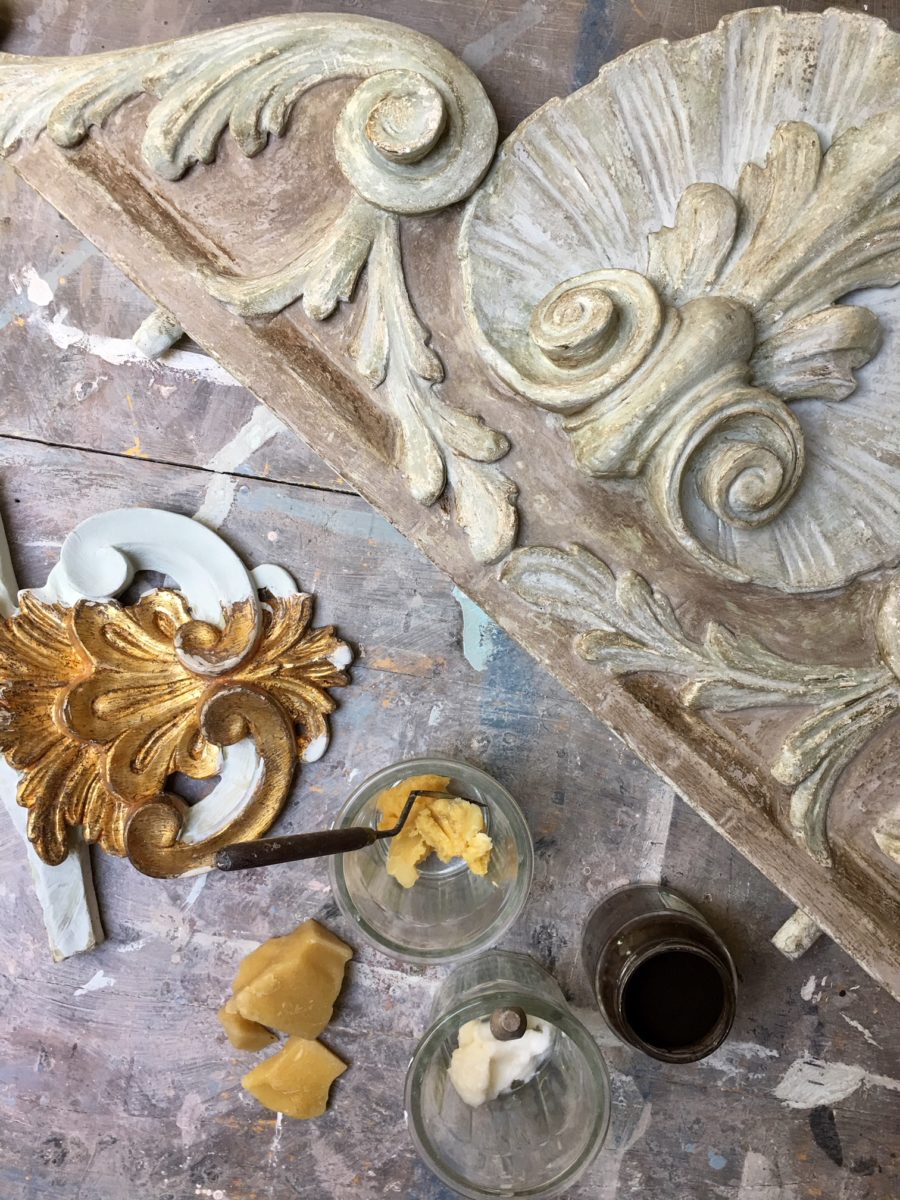
In this post I will talk about the neutral and pigmented wax finishes. Neutral means colorless. Pigmented instead colored. The wax finish is highly protective because once dried and hardened it is very resistant and perfectly water-repellent. The wax that you find on the market ready is a derivative of beeswax treated with turpentine (derivative of petrochemical origin). So if the original product is natural, the final product is a petrochemical synthesis product. I always recommend using gloves to protect your hands from contamination. The essence of pure gem turpentine is a distillate of pine resins. It has a lower toxicity than industrial turpentine (to understand what you find from the hardware with the term turpentine that are much less refined or are even petrochemical derivatives), but still retains its toxicity. Water based wax is less protective. The wax based on limonene is comumque toxic as it is of chemical origin. You can also prepare beeswax. Unfortunately the turpentine must always be added to soften the wax. Recipe for beeswax: they are reduced into flakes with a knife 120 gr. of beeswax and add 80 gr. of carnauba wax always in flakes. Add 80 cl. of essence of turpentine. Put everything in a container that can be heated in a bain-marie over the fire and stir occasionally. (12% of wax, 8% of carnauba, 80% of turpentine essence) Pay the utmost attention as the turpentine is flammable (it should not therefore splash on the fire) and the hot wax is highly scalding. When the wax is completely melted, remove it from the heat and pour into the appropriate containers (glass jars or hard plastic containers). After it has cooled down, the pots must be tightly closed and stored in the dark. You can use it in natural and therefore almost colorless or pigmented and then colored with different elements (colored pigments, Judaic bitumen, talcum powder, etc.). The wax thus obtained has a decidedly inferior cost to that already sold ready. If you want to obtain a covering white wax, you will join your white titanium wax, if you want to obtain a black wax you will join Nero Roma or Nero Vite. Better if you use powder pigments. There is also a natural wax made from organic linseed oil, carnauba wax, beeswax, larch resin balm, natural citrus oil sold ready and at a decidedly inexpensive price. The company sells a German company. The waxes are all spread with a brush, with a wool cloth and sometimes sprayed.
Slightly alter the color by darkening it if applied on closed-pore substrates or synthetic paints. They alter the color by darkening it by 3-4 shades in the case of lime putty paints and in the case of patinas based on natural glues and in any case in all open pore surfaces and therefore absorbing. To learn more about this topic I will wait for you in my atelier of Villa Cremisi during my teaching courses.
See you soon,
Barbara




